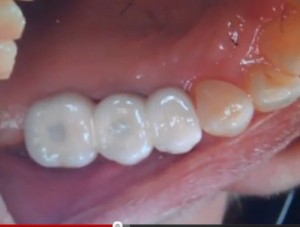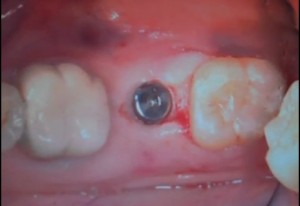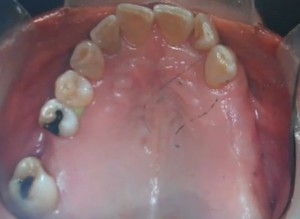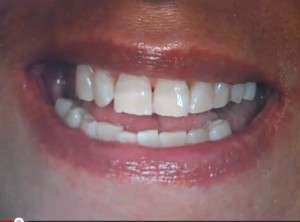Dental implants are artificial teeth that replace missing or damaged teeth through a surgical procedure. The artificial teeth look and function just like the real ones.
The surgery to put dental implants is dependent on certain factors such as the condition of the jawbone and the kind of implant. But all dental implant surgeries require many procedures and generally occur in stages. Dental implants require the bone to completely heal around them, thereby providing solid support to them. This healing process can take several months.
Why should I use dental implants ?
Dentures or fixed bridgework can cause noise and damage to the bones. However, since the titanium dental implants fuse with the jawbone, they do not result in such dental hassles and also serve as the roots of the missing teeth. Additionally, unlike normal teeth, there is no decay of the materials used in dental implants.
One can go for dental implants, in case of the following:
- One or more teeth are missing
- Can do a bone graft or have the necessary bone to fix the implants
- Can dedicate several months to the process
- The jawbone is fully grown
- The oral tissues are healthy
- Cannot, or do not want to wear dentures
- Are generally healthy and do not have medical conditions that will prevent bone healing
- If the speech is impaired due to dental issues
Like all surgeries, dental implant surgery also has many risks, though they tend to be minor and can be easily treated. Some of the risks include infection of the site, nerve damage resulting in numbness or pain on the lips, gums, and other oral organs, damage or trauma to the nearby structures such as blood vessels and teeth and sinus problems due to the intrusion of the upper dental implants into a sinus cavity
Exams and Tests for dental implants
The tests to be conducted prior to getting a dental implant are as follows:
- An exhaustive dental exam that may include the making of mouth models of the patient, dental X-rays, etc
- Depending on the condition of the jawbone and the number of damaged or missing teeth, the doctor may eke out a treatment plan that suits the patient. The procedure requires various dental specialists such as a periodontist, who specializes in structures that support teeth; and a maxillofacial and oral surgeon who clarifies the conditions of the face, mouth and jaw.
- All known medical conditions, consumption of prescription and other medications and the presence of orthopedic implants or cardiac conditions must be revealed to the doctor, before undergoing surgery t o get dental implants.
- Patients are also put under anesthesia to reduce the pain of surgery. The right kind of anesthesia is decided by the dentist. The doctor may also advice the patients on the various dos and don’ts before surgery. It is always best to go home from the hospital with a caregiver after surgery.
Dental Implants Procedure
The installation of dental implants happens in many stages and may take several months. However, most of this period is for the healing process and for the growth of new bone in the jaw.
The process involves the following steps:
- The dental implant cylinder is first placed in the jawbone and then allowed to heal for many months. Then the abutment is fixed and the artificial tooth is implanted.
- In case the jawbone is too soft or thin, then bone grafting may be required to strengthen it, so that the dental implant can be placed. A week jawbone will not be able to support the grinding action of the teeth and may result in failure of the dental implant surgery. Hence bone grafting is required.
- The dental implant surgery involves cutting open of the gums to reveal the bone. Then holes are drilled deep into the bone. The holes are deep because the dental cylinder that is placed in them acts as the root of the artificial teeth. Hence a deep foundation is required.
- The dental cylinder is then allowed to heal for several months as the jawbone fuses into and around the metal cylinder.
- Once the healing process is over, another minor surgery to place the abutment is required. The gums then need to heal for a few weeks. In certain cases, the second surgery is not required if the abutment is placed along with the dental implant.
- Impressions of the remaining teeth and the mouth are then made to determine the placement of the artificial tooth. There are two types of artificial teeth that a patient can choose from. The first is a removable implant prosthesis which is similar to dentures and can be removed for daily cleaning. The second is a fixed implant prosthesis which is permanently fixed to the abutment. This is more expensive and one cannot remove it for daily cleaning.
Prognosis for dental implants
- After surgery, the patient may experience various symptoms such as pain, swelling, bleeding, etc. In case, these symptoms are severe, one needs to visit a dentist for painkillers, antibiotics or other medications.
- In case, the bone does not fuse around the dental implant, then it is removed, the bone is cleaned and the procedure can be tried again after a few months.
- Just like normal teeth, the artificial teeth also require the maintenance of dental hygiene. Also, one should avoid the intake of very cold or damaging food items, such as ice, hard candies, etc.
- It is essential to have regular checkups with a dentist for the health and effective functioning of the implants.
Pictures of Dental Implants




Hey! Do you know if they make any plugins to safeguard against hackers? I’m kinda paranoid about losing everything I’ve worked hard on. Any suggestions?